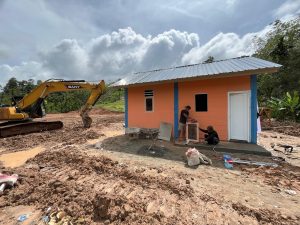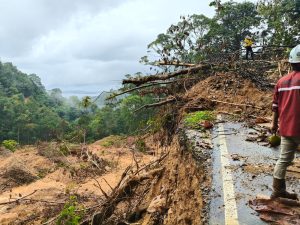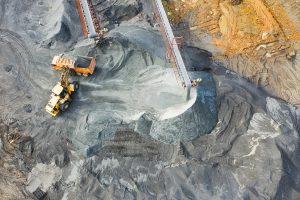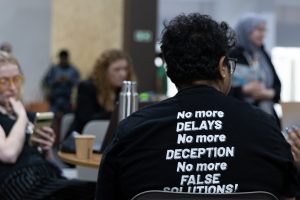by Nabiha Shahab
Jakarta — On October 10, 2025, President Prabowo Subianto signed Presidential Regulation No. 110 of 2025 on the Implementation of the Carbon Economic Value Instrument and National Greenhouse Gas (GHG) Emission Control, and it immediately come into force. The policy aims to clarify rules, enhance digital infrastructure, and accelerate the country’s integration with international carbon markets.
The new regulation replaces the earlier Presidential Regulation No. 98/2021, long criticised for its overlapping mandates and limited technical guidance. It introduces a clearer roadmap for both compliance and voluntary carbon trading, while reaffirming Indonesia’s commitment to its Nationally Determined Contribution (NDC) under the Paris Agreement.
The introduction of the regulation comes just in time for the UN Climate Summitt COP 30 in Brazil, where Indonesia plans to showcase its readiness for international carbon trading.
Dual registry system
One of the new features of Presidential Regulation No. 110 of 2025 is the digital overhaul of Indonesia’s national registry. The regulation officially splits the country’s carbon data infrastructure into two distinct systems, the National Registry System for Climate Change Control (SRN) — which continues to monitor all mitigation, adaptation, and policy actions related to climate change; and the National Registry for Carbon Units (SRUK) — a brand-new, market-oriented ledger dedicated to recording every carbon credit generated, sold, or retired in Indonesia’s carbon markets.
This structural shift is designed to strengthen transparency and traceability in the country’s carbon trading ecosystem. The new dedicated registry will function as a digital public ledger for carbon units, helping investors and regulators track ownership, avoid double-counting, and align Indonesia’s system with global carbon credit standards such as Verra and Gold Standard.
The reform also addresses a key weakness identified by researchers and market participants. A recent paper in Trees, Forests and People, led by Riko Wahyudi from the University of Indonesia and the Indonesia Climate Change and Forestry Experts (APIK Indonesia) Network, found that while the SRN plays a “vital role” in tracking climate action, it remains “technically underdeveloped and institutionally fragmented.” The lack of interoperability with international systems has so far limited Indonesia’s participation in voluntary carbon markets.
Regarding the newly enacted Presidential Regulation, Riko said that there are still many details that need to be clarified. According to him, “the centralised approach (Presidential Regulation 98/2021) and the decentralised approach (Presidential Regulation 110/2025) each have their own advantages and disadvantages.”
“For this decentralisation, we don’t yet have a complete picture or roadmap of what it will look like. For example, where will the SRUK be located? Will it be in each sector? If so, how long will the investment take and what will the capacity of each sector be?” he told tanahair.net. “So, we may need clarity and a detailed roadmap to provide certainty to donors and investors, including efforts to fulfil Indonesia’s NDC,” added Riko.
Streamlining voluntary carbon trading
The new regulation also simplifies pathways for voluntary projects. Developers can now sell carbon credits to international buyers for voluntary use without requiring special government authorisation, a major procedural improvement that is expected to encourage private investment and international partnerships.
Businesses and the public still have the opportunity to initiate projects that reduce emissions and generate tradable carbon credits, but under a much clearer validation and verification process. The regulation provides a step-by-step guide for project approval, helping ensure that emission reductions are credible, measurable, and aligned with Indonesia’s climate targets.
Public participation remains a cornerstone of the system, with the government reaffirming its commitment to community and civil society involvement.
The carbon levy
The carbon levy — a state-imposed fee on carbon-intensive goods and activities — remains a key fiscal instrument in the new framework. The regulation grants stronger authority to the Minister of Finance to design and implement the mechanism, which will be central to incentivising low-carbon behaviour across industries.
The levy system is expected to complement carbon trading by creating both economic disincentives for pollution and financial resources for climate mitigation projects.
Civil society response: flexibility and future gaps
Civil society leaders have broadly welcomed the regulation’s clarity and flexibility, though they stress that further reforms are needed.
“This government regulation improves the previous one,” said Nadia Hadad, Executive Director of Madani Berkelanjutan. “The previous rule mixed climate change adaptation and mitigation with carbon trading, and this new version gives more structure. But we still need a ‘Climate Justice Law’, the name itself would show that our direction is centred on equity.”
Nadia noted that the new framework opens the door to emerging areas such as blue carbon, which were previously unregulated. “There’s now recognition for mangroves and seagrasses, but coordination is still an issue,” she added. “The Forestry Ministry manages mangroves, while seagrasses fall under the Fisheries Ministry, which still lacks a carbon accounting system. So, the work isn’t done yet.”
Toward global market integration
The new digital registry and procedural clarity directly address concerns raised in academic and policy circles about Indonesia’s readiness for international market participation.
Wahyudi’s paper identified five priority actions to make Indonesia’s carbon system globally interoperable: pilot MRAs with Verra and ART-TREES; clarify institutional mandates; create incentives such as lower levies and fast-track verification; strengthen subnational engagement; and include private-sector participation in governance.
Many of these recommendations are reflected in the spirit of the new regulation, particularly its emphasis on transparency, interoperability, and inclusivity.
Government Regulation No. 110/2025 positions Indonesia closer to a fully functioning national carbon market, one that can interact with global systems while safeguarding national interests. The structural reform of the registry could mark a turning point in restoring market confidence after years of institutional uncertainty.
If implemented effectively, this dual-registry approach may transform Indonesia’s carbon governance from fragmented bureaucracy into a credible, transparent, and investor-ready framework — advancing not only its NDC goals, but also its ambition to become a regional hub for sustainable carbon finance.
Banner photo: Image generated by OpenAI’s DALL·E via ChatGPT (2024)














